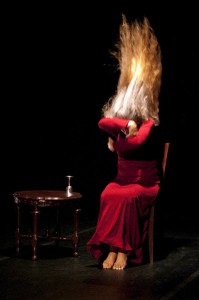by Cathy Barbash
I reported last year about the do-it-yourself El Sistema-like Rural Unity Music Project, implemented far from the supervisory eyes in Beijing . Now you can similarly create and book cultural exchange (read, “local expenses but no fees”) performances and residency activities in Beijing without the formerly required government-owned NGO’s (GONGOs), if you have your own connections with presenters and a trusting relationship with the Ministry of Culture.
¡Sacabuche!, the early music group which grew out of the Early Music Institute at Indiana University’s Jacobs School of Music managed such a feat last month. With no working capital but their own creativity, commitment and connections (aka guanxi), the team of Linda Pearse (¡Sacabuche! founder and artistic director), Ann Waltner (noted Ming scholar at the University of Minnesota) and composer Huang Ruo created “Matteo Ricci: His Map and Music,” a multi-disciplinary project incorporating both early and new western and Chinese music and Chinese and English texts.
The program premiered at the National Centre for the Performing Arts in Beijing with follow up performances at the South Cathedral (Nantang), on the site where Ricci lived and preached 400+ years ago, and at People’s University. Other performances and residency activities included a day spent with the students of Changping No. 1 High School, and lecture-demonstration/performances at Peking University, the Central Conservatory of Music, the U.S. Embassy and the Ullens Center for Contemporary Art in the 798 Art District. (I provided pro bono producing services.)
The Chinese presenters took a chance in presenting this group, since not only was this their debut international tour, but early music is all but unknown to China ‘s audiences. Though the project received no money from the State Department, a letter of endorsement from the Cultural Affairs section of the U.S. Embassy helped clinched the invitation to perform at the National Center for the Performing Arts.
The programming and our viral PR campaign, however, were the trump cards. Matteo Ricci (Li Madou in Mandarin), was an Italian Jesuit who settled in Beijing , dying there in 1610. These were the last in an unrelated series of cultural events commemorating the Ricci anniversary in Beijing , and as far as we could tell, the only concerts. Despite recent tensions in China ‘s Catholic community, Matteo Ricci is considered beyond reproach, the model expat who showed the deepest respect to Chinese culture. And since the program combined music with scholarship, spoken word and projections, we were able to reach out also to potential audiences in the academic community through Waltner’s network.
Houses were full, positive blog posts spread after performances. The ensemble, with performers 20-75 years old hailing from everywhere from small town Indiana to Spain, Canada, Australia and New Zealand, bonded with their Chinese musician colleagues, and interacted with Chinese of all ages and a broad spread of socio-economic classes. There was a bare minimum of government involvement from either side in making this happen, yet the maximum possible activity squeezed into 10 days. Everyone was delighted and inspired. This was citizen to citizen diplomacy the way it should be, and the way it now can be. Come one come all.
